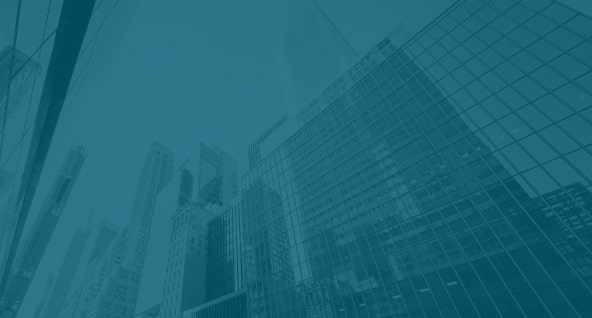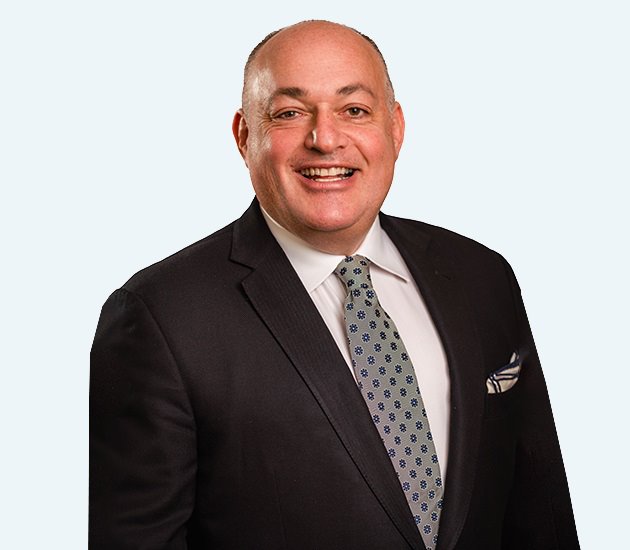NEW YORK TRAIN ACCIDENT LAWYERS WITH 50 YEARS OF EXPERIENCE
With extensive experience in personal injury law, our tenacious team at the Law Offices of Spar & Bernstein represents train accident claimants in New York. Approaching your case with great care and attention to detail, we make sure you are fairly compensated for your damages, injuries or loss.
WHY HIRE SPAR & BERNSTEIN FOR A TRAIN ACCIDENT?
From subway or commuter incidents to train derailments and train collisions, our knowledgeable train accident lawyers at Spar & Bernstein will identify the cause of your train accident, collect evidence and file on your behalf for fair compensation for your injuries and subsequent damage.
TRAIN ACCIDENTS RECOGNIZED BY NEW YORK STATE LAW
The train accidents recognized by New York State Law include:
- Subway accidents
- Metropolitan Transportation Authority (MTA) accidents
- Passenger train accidents
- Commuter train accidents
- Freight train accidents
NEW YORK TRAIN ACCIDENT LAWS
New York Statute Of Limitations
The Statute of Limitations states that after a train accident in New York, you must file a personal injury claim within three (3) years. If you do not submit your claim within this time frame, it may be denied.
If you lost a loved one in a train accident, you must file a wrongful death lawsuit within two (2) years of the accident.
To file a claim against a government organization, you must submit a Notice of a Claim within the first 90 days after the accident and file a lawsuit within one (1) year and 90 days, from the date of the accident.
Common Carrier Standard Of Care
This law states that a common carrier, railroad or subway are responsible for providing reasonable care when operating their trains, to keep passengers safe. Putting a passenger at risk is considered negligent conduct by the common carrier.
Federal Employers’ Liability Act (FELA)
FELA is a federal law that protects railroad personnel who are injured on the job, regardless of whether the injury is sustained in a railyard, on a track or at the office.
WHO IS LIABLE FOR TRAIN ACCIDENTS IN NEW YORK?
The parties liable for a train accident in New York are those that have contributed to the accident. This can include train drivers, railroad companies operating a train or owning a track, and local city or county train manufacturers.
COMPENSATION FOR TRAIN ACCIDENT INJURIES IN NEW YORK
After a train accident, you may be able to seek various economic and non-economic damages, including:
Accident-Related Current And Future Medical Costs
If you suffered injuries as a result of a train accident, you can file a claim for current and future medical expenses related to the accident.
Lost Wages
If you were unable to work after the accident and had to take time off, you can file a claim for lost wages.
Pain And Suffering
If you suffered physical and emotional pain that you would not go through under normal circumstances, you can seek compensation for pain and suffering.
Property Damage
If the train accident damaged or destroyed your personal property, you can seek property damage compensation from the at-fault party.
Wrongful Death
If your loved train accident victims, you can file a wrongful death lawsuit.
Experienced Train Accident Lawyers Fighting For You
Get compensated for your pain and suffering, lost wages and medical bills now.
- 50+ years of experience in all areas of personal injury law
- 100+ million dollars recovered for our clients
- Motor vehicle, Construction accidents & more
NEW YORK TRAIN ACCIDENT FAQS
What Are The Most Common Causes Of Train And Subway Accidents In New York?
The most common causes of train and subway accidents in New York include:
- Defective tracks
- Objects on the tracks
- Incorrect switch alignment
- Poor track maintenance
- Malfunctioning railroad crossing guards
- Malfunctioning warning lights and alarms
- Defective or broken platforms
- Defective train parts, such as steps or handrails
- Defective or broken escalators
- Train operator error
- Excessive speed
- Insufficient or inadequate training
What Are The Most Common Train Accident Cases In New York?
- Train derailment
- A pedestrian being struck by a train in various situations, such as walking near the train tracks, falling from the platform on the tracks at a subway station, or attempting to cross the tracks while the train is approaching
- A vehicle being struck at a train crossing
- Slips, trips and falls at a subway station or on a train
- Train collision
- Electrocution on the tracks
What Are The Most Common Causes Of Rail Derailment?
The main causes of rail derailment fall into two main groups:
- Technological malfunction, such as machinery failure, brake malfunction or dangerous tracks
- Human error, including inattentive behavior or mistakes made by engineers or conductors
What Are Common Injuries After A Train Accident?
The most common injuries after a train accident include:
- Fractures
- Back and neck injuries
- Soft tissue damage
- Internal organ damage
- Traumatic brain injuries
- Spinal cord injuries
- Amputations
What Types Of Damages Can You Pursue After A Train Accident In New York?
After a train accident in New York, you can seek compensation for different types of damages, including:
- Economic damages, such as medical bills, lost wages, therapy and rehabilitation care costs, property damage or funeral and burial costs
- Non-economic damages, such as pain and suffering, loss of consortium, mental anguish, diminished earning capacity or loss of enjoyment of life
Our knowledgeable train accident lawyers at Spar & Bernstein will help you reach a fair settlement for the injuries and damages you sustained.
What Are The Responsibilities Of Railroad Companies To Their Passengers?
As common carriers, railroad companies provide transportation services for a fee. As per New York’s Common Carriers law, railroad companies are required to secure the highest standard of care for their passengers, from boarding to exiting the train.
If the passengers are injured, carriers are liable for the injury, even if their fault in the accident was minimal, or the accident was caused by third parties or weather conditions.
What Carriers Can I Sue After A Train Accident In New York?
The carriers you can sue after a train accident in New York typically include:
Our train accident lawyers at the Law Offices of Spar & Bernstein will help you identify the party or parties responsible for the accident and determine the best path forward to help ensure you are compensated for your injuries.
How Can I Prove That My Train Accident Was Caused By Negligence?
To prove that your train accident was the result of negligence, you must show that the train company or operator did not take care of you as a passenger, by failing to maintain the train, tracks or stations.
This can be a time-consuming and complicated process that requires extensive evidence, such as:
- Surveillance footage
- Photos and videos by other passengers
- Witness statements
- NYCTA/MTA employee testimony
Contact our experienced train accident lawyers at Spar & Bernstein for a free initial consultation on your case. We’ll review the details, gather the evidence you need and fight on your behalf for fair compensation.
How Can Spar & Bernstein Help Me After A Train Accident?
After a train accident, our tenacious attorneys will:
- Partner with top experts to identify the cause of your train accident
- Work with medical teams to identify your damages and the cost of your treatment and recovery
- Handle all paperwork
- Negotiate a fair settlement amount
- If needed, take your case to court
Why Are Train Accident Injuries So Serious?
Train accident injuries can be severe and even fatal due to the speed, size and weight of the railroad cars. Even the most modern motor vehicles do not stand a chance against an approaching train. Experts compare the impact of a 30-car train hitting a car to an aluminum soda can hit by a car.
Are Subway Accidents Common In New York?
From January to August 2021, there were 47 subway fatalities in New York, as a result of train collisions, train track falls and electrocutions caused by touching an electrified rail.
How Can I Avoid Subway Or Commuter Accidents?
To avoid subway or commuter accidents:
- Never run on a train platform
- Stay away from the platform edge
- Do not lean forward to check for an approaching train
- Proceed to the edge of the platform only after the train is fully stopped
- If you drop something on the tracks, do not attempt to retrieve it by stepping down. Inform the train station staff instead.
- Ensure your clothes, long hair or bags do not get caught between the doors when boarding or exiting the train
- Do not try to stop a train door that is closing — unlike elevator doors, it will not reverse its course
- Do not lean against the doors while the train is moving
- Hold a stand strap or a pole while the train is moving and you are standing
- If accompanied by children, make sure you hold their hands at all times
How Can I Avoid Train Accidents On The Tracks And At Railroad Crossings?
To avoid train accidents:
- Use designated crossing areas to cross the train tracks
- Stop 10 yards away from the tracks if there is a red light, to prevent being trapped or boxed in
- When crossing the tracks, check for approaching trains in both directions
- Remember that all tracks may be in use — even those that seem to be non-functioning or used in one direction only
- If you observe failure of safety features on the train or on the tracks, report them immediately
- Do not go around railroad safety arms
- Leave enough space between your vehicle and the train — the width of a train is larger than the width of the train tracks
- Check for additional trains coming after or opposite the train you initially saw
- If you are driving behind a bus or a truck and are approaching a railway crossing, be prepared to come to a full stop, even if you see a green light
- If your car gets stuck while crossing the tracks, leave the vehicle immediately. Stay at a safe distance from the tracks and call 911 as well as the emergency number posted at the crossing.
Bradford H. Bernstein, a second-generation leader at Law Offices of Spar & Bernstein, P.C., has helped over 100,000 clients with immigration and personal injury issues. Brad joined the firm in 1993, became a partner in 1997, and assumed leadership in 2000 after Harry Spar retired.
View Brad's Bio



